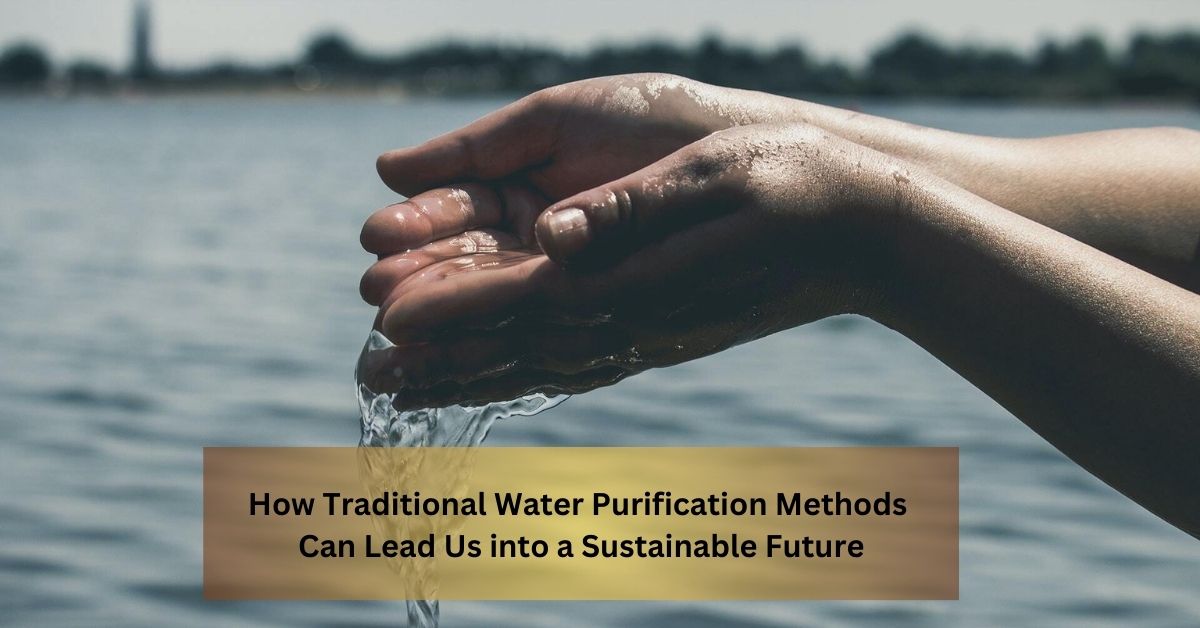In an age where technology reigns supreme, it’s easy to overlook the wisdom of the past. Yet, as we navigate the challenges of sustainable living, ancient practices—particularly those related to water purification—offer invaluable insights. These time-honored methods, honed over millennia, not only embody simplicity and efficiency but also harmonize with nature. Let’s embark on a journey to rediscover these traditional water purification techniques and envision how they can be integrated into our modern quest for sustainability.
The Essence of Ancient Water Purification
Long before the advent of modern filtration systems and water dispensers, civilizations thrived by harnessing natural resources to purify water.
These methods were not just about making water safe for consumption; they were deeply intertwined with the cultural, spiritual, and environmental ethos of communities.
From the use of sand and gravel for filtration to the antibacterial properties of copper and silver, ancient practices leveraged the materials at hand in ingenious ways.
One of the most fascinating aspects of these traditional techniques is their sustainability. They require minimal energy, utilize locally available materials, and produce little to no waste, embodying principles that are now more relevant than ever.
A Sustainable Thirst Quencher
In today’s world, where plastic bottles and high-energy-consuming purification systems dominate, turning to traditional methods could be a breath of fresh air. Imagine communities where water is purified using methods that have been passed down through generations, rather than relying on electric water dispensers. This shift could significantly reduce our carbon footprint and plastic waste, offering a more sustainable way to quench our thirst.
Revitalizing Ancient Practices
The beauty of traditional water purification methods lies not only in their environmental benefits but also in their adaptability. Here are a few practices that have stood the test of time and how they can be revitalized in the contemporary world:
Solar Disinfection (SODIS)
Harnessing the power of the sun to purify water is a method that has been used for centuries. By filling transparent bottles with water and exposing them to sunlight, pathogens are destroyed, making the water safe to drink. This simple yet effective technique can be easily adopted in urban and rural settings alike, promoting access to clean water without the need for complex infrastructure.
Charcoal Filtration
Charcoal, particularly activated charcoal, has remarkable properties for filtering water. It can remove impurities and improve taste. Modern iterations of this ancient technique can be integrated into community water systems, offering a low-tech solution to water purification that is both effective and sustainable.
Sand and Gravel Filtration
Sand and gravel filtration systems, often found in the form of biosand filters, are a testament to the ingenuity of ancient civilizations. These systems can be constructed with locally sourced materials and require minimal maintenance, making them ideal for community-led water purification projects.
Community Empowerment and Education
Reviving these ancient methods goes hand in hand with empowering communities and educating the public about sustainable water management. Workshops, school programs, and community initiatives can play a pivotal role in spreading knowledge about traditional water purification techniques. By fostering a sense of ownership and involvement, communities can become self-reliant in managing their water resources sustainably.
Policy Support and Technological Integration
For traditional water purification methods to gain traction in the modern world, supportive policies and the integration of technology are crucial. Governments and environmental organizations can provide funding, research, and development support to adapt these ancient practices to contemporary needs. Additionally, technology can play a complementary role, such as using mobile apps to track water quality or employing low-cost sensors to monitor the effectiveness of traditional purification systems.
A Call to Action: Embracing the Past to Secure Our Future
The revival of traditional water purification methods is more than a nod to the past; it’s a forward-looking approach to sustainable living. By embracing these time-tested techniques, we can address some of the most pressing environmental challenges of our time, from water scarcity to pollution.
This journey requires collaboration across sectors, disciplines, and cultures. It invites us to learn from our ancestors, adapt their wisdom to our contemporary context, and pass on a more sustainable and water-secure world to future generations.
As we forge ahead into an uncertain future, the ancient wisdom of water purification stands as a beacon of sustainability. These practices remind us that sometimes, the solutions we seek lie not in the pursuit of new technologies but in the knowledge of the past. By reviving and integrating traditional water purification methods into our lives, we can pave the way for a more sustainable, resilient, and water-wise future.


